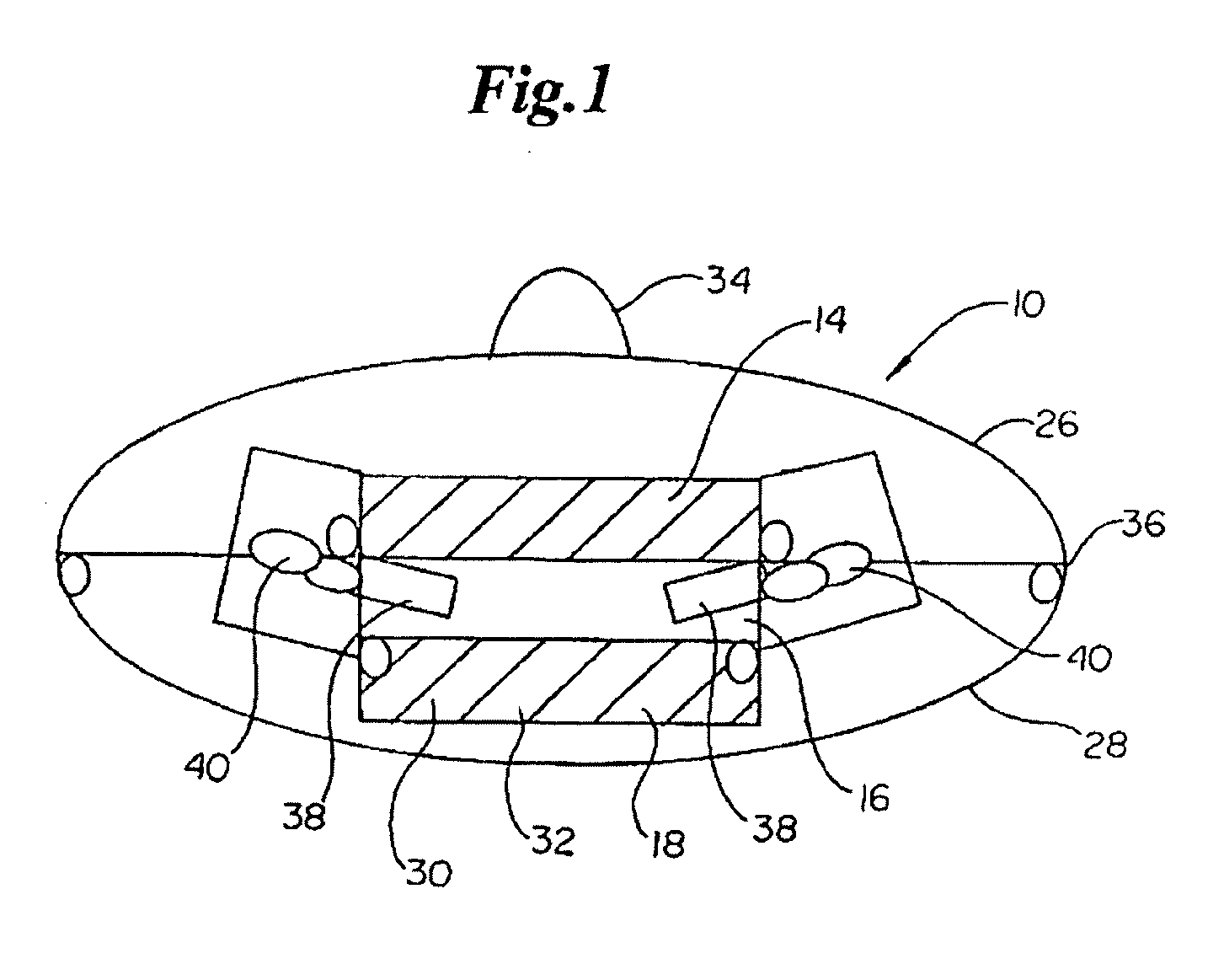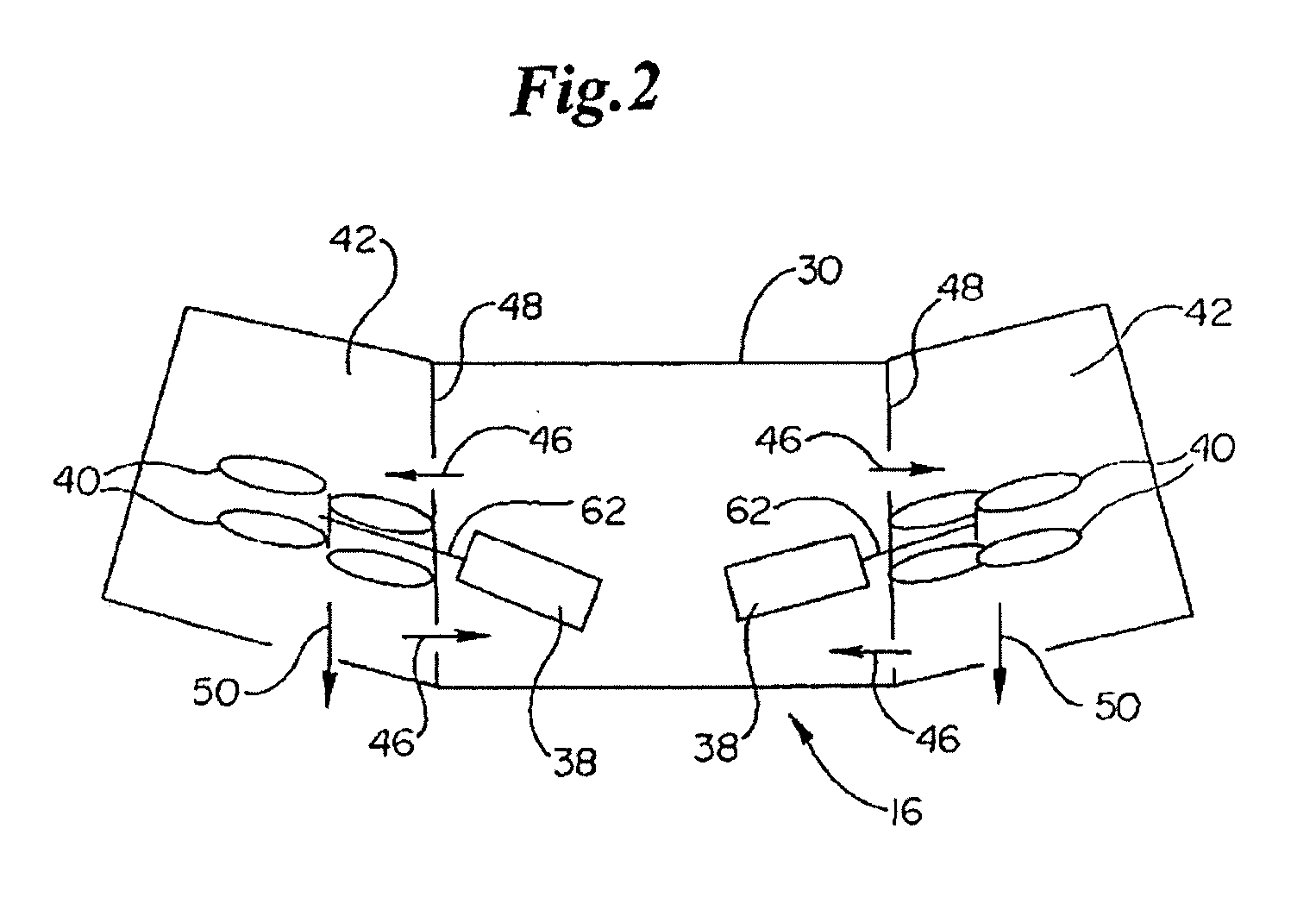Homeostatic flying hovercraft
a hovercraft and homeostatic technology, applied in aircraft navigation control, process and machine control, instruments, etc., can solve the problems of difficulty in controlling and maneuvering, and difficulty in controlling and controlling this craft. to achieve the effect of easy control
- Summary
- Abstract
- Description
- Claims
- Application Information
AI Technical Summary
Benefits of technology
Problems solved by technology
Method used
Image
Examples
Embodiment Construction
[0068]As illustrated in FIGS. 16-20, a preferred embodiment of a homeostatic flying hovercraft 200 is presented in accordance with the present invention. The homeostatic flying hovercraft 200 has generally an ellipsoid shaped body 200, having an upper surface 202 and bottom surface 204. As illustrated in FIG. 18, the upper surface 202 is comprised of a solid outer ring 206 of the saucer body 200 that extends radially inwards from the periphery and an removeable cover 208 containing a plurality of ventilation openings 210. Preferably, the cover 208 has a slightly greater curvature as compared to the outer ring 206. The lower surface 204, as illustrated in FIGS. 17 and 20 is a solid structure with four equally spaced circular duct openings 212. As illustrated in FIG. 19, each duct opening 212 preferably is angled at ten to fifteen degrees from the vertical and contains a battery-powered ducted fan 214 mounted inboard from the duct opening 212.
[0069]FIG. 21 provides a side cutaway view...
PUM
 Login to View More
Login to View More Abstract
Description
Claims
Application Information
 Login to View More
Login to View More - R&D
- Intellectual Property
- Life Sciences
- Materials
- Tech Scout
- Unparalleled Data Quality
- Higher Quality Content
- 60% Fewer Hallucinations
Browse by: Latest US Patents, China's latest patents, Technical Efficacy Thesaurus, Application Domain, Technology Topic, Popular Technical Reports.
© 2025 PatSnap. All rights reserved.Legal|Privacy policy|Modern Slavery Act Transparency Statement|Sitemap|About US| Contact US: help@patsnap.com



